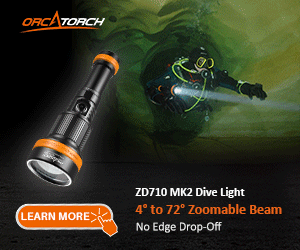Guy,
I would agree fully that the Olympus E-M5 and the Nauticam NA-EM5 housing are both excellent choices for anyone wanting to move up for a consumer compact, as a new starting system or for the many who have wanted to down size for the DSLR size APS-C cameras.
I am not a pixel-peeper and look to others for those types of reviews and it is clear to me that DPReview is one of the most well respected of the bunch. They compare cameras of like class to each other when awarding points and allow you to compare results between cameras.
So according to DPreview the E-M1 has better (not by a lot) RAW and Jpeg quality than the E-M5, Canon 7D and 70D and Panasonic GH-3, Nikon D-7100 an excellent camera as are all these is slightly better in both.
Video wise and video is not Olympus target market, E-M5 same and 7D, 70D and GH-3 better and D-7100 worse by more than a little bit.
I think the bottom line here is that all of the current higher end sub full frame cameras like those listed above are on par image quality wise with each other and that the only way to get any really noticeable increase in image quality is by going with a full frame 35mm sensor or bigger.
Regarding cost, Olympus has made it quite clear that the E-M1 is the "PRO" camera replacement for the Olympus DSLR E-1, E-3, E-5 line of cameras and this is reflected in the ability to use the excellent quality 43 lens line like the 300mm F/2.8, 90-250mm F/2.8 zoom, 50mm macro (one of the best macros ever made) and others.
Further all three of the Olympus E-line of cameras entered the marker at a street price of $1699.00US so to many the price for this camera does not seem out of line at all.
Regarding the 12-40mm zoom at $999.00 the DXO test show this lens to be as good or better than the Panasonic 12-35mm which retailed when it was released several years ago at $1399.00. The 12-40mm is also quite significantly better in all respects compared to the 12-50 KIT according to DXO when using the same camera body to compare.
If you look at the DXO marks regarding sensors, the E-M1 also does better than the E-M5 but worse than cameras with bigger sensors and more MP's, a bit misleading to me because it does not take lens and other issues into consideration. If is for instance quite clear to me the medium format sensors yield better image quality than 35mm sensors. But because they have CCD sensors rather than C-moss sensors they don't work well at ISO settings above 400 so they get a lower DXO rating this has nothing to do with their ability to take better quality images at base ISO settings.
Bottom line is that image quality wise not much difference between any of these cameras. Built quality, speed, viewfinder wise several differences. So while an E-M1 system is going to cost more than the E-M5 system, I think overall it will still be a less expensive investment than any of the DSLR's you have listed above and lots smaller.
I fully understand your not wanting to sell an excellent year+ old camera but for others it may be cost effective compared to others cameras that have 5-axis image image stabilization, ability to use both M43 and 43 lenses, weather and freeze sealing, high frame rate, PRO quality lenses and much much more all in a still very small package.
Phil Rudin



